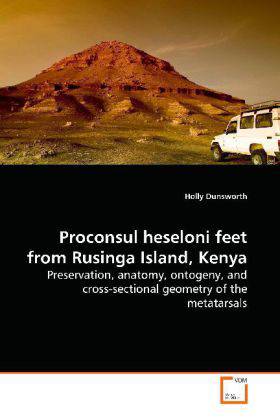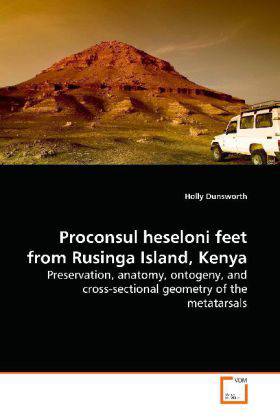
Je cadeautjes zeker op tijd in huis hebben voor de feestdagen? Kom langs in onze winkels en vind het perfecte geschenk!
- Afhalen na 1 uur in een winkel met voorraad
- Gratis thuislevering in België vanaf € 30
- Ruim aanbod met 7 miljoen producten
Je cadeautjes zeker op tijd in huis hebben voor de feestdagen? Kom langs in onze winkels en vind het perfecte geschenk!
- Afhalen na 1 uur in een winkel met voorraad
- Gratis thuislevering in België vanaf € 30
- Ruim aanbod met 7 miljoen producten
Zoeken
Proconsul heseloni feet from Rusinga Island, Kenya - Preservation, anatomy, ontogeny, and cross-sectional geometry of the metatarsals
Preservation, anatomy, ontogeny, and cross-sectional geometry of the metatarsals
Holly Dunsworth
Paperback | Engels
€ 115,95
+ 231 punten
Omschrijving
In the mid 1980s, teams from Johns Hopkins University and the National Museums of Kenya colleted a minimum of ten Proconsul heseloni individuals from the Kaswanga Primate Site (KPS), Rusinga Island, Kenya dating to the early Miocene. Five of them have nearly complete right and/or left feet. Because the KPS individuals died at different stages of development, their foot and hindlimb proportions through ontogeny are investigated. Dissimilarities to macaques and similarities to apes in growth patterns suggest Proconsul was not born with large feet like macaques and other non-hominoid primates. The Proconsul metatarsals were scanned with high-resolution microCT and in overall strength properties they resemble Macaca more than Pan. However, the first metatarsal of Proconsul showed greater resistance to bending and torsional forces for its length than Macaca, which is more like Pan. Overall results support previous interpretations on partial and incomplete Proconsul pedal fossils, and on other parts of the postcranial skeleton, that Proconsul was a generalized arboreal quadruped that grasped tree branches with a long, strong hallux.
Specificaties
Betrokkenen
- Auteur(s):
- Uitgeverij:
Inhoud
- Aantal bladzijden:
- 324
- Taal:
- Engels
Eigenschappen
- Productcode (EAN):
- 9783639105438
- Verschijningsdatum:
- 23/12/2008
- Uitvoering:
- Paperback
- Formaat:
- Trade paperback (VS)
- Afmetingen:
- 152 mm x 229 mm
- Gewicht:
- 435 g

Alleen bij Standaard Boekhandel
+ 231 punten op je klantenkaart van Standaard Boekhandel
Beoordelingen
We publiceren alleen reviews die voldoen aan de voorwaarden voor reviews. Bekijk onze voorwaarden voor reviews.









